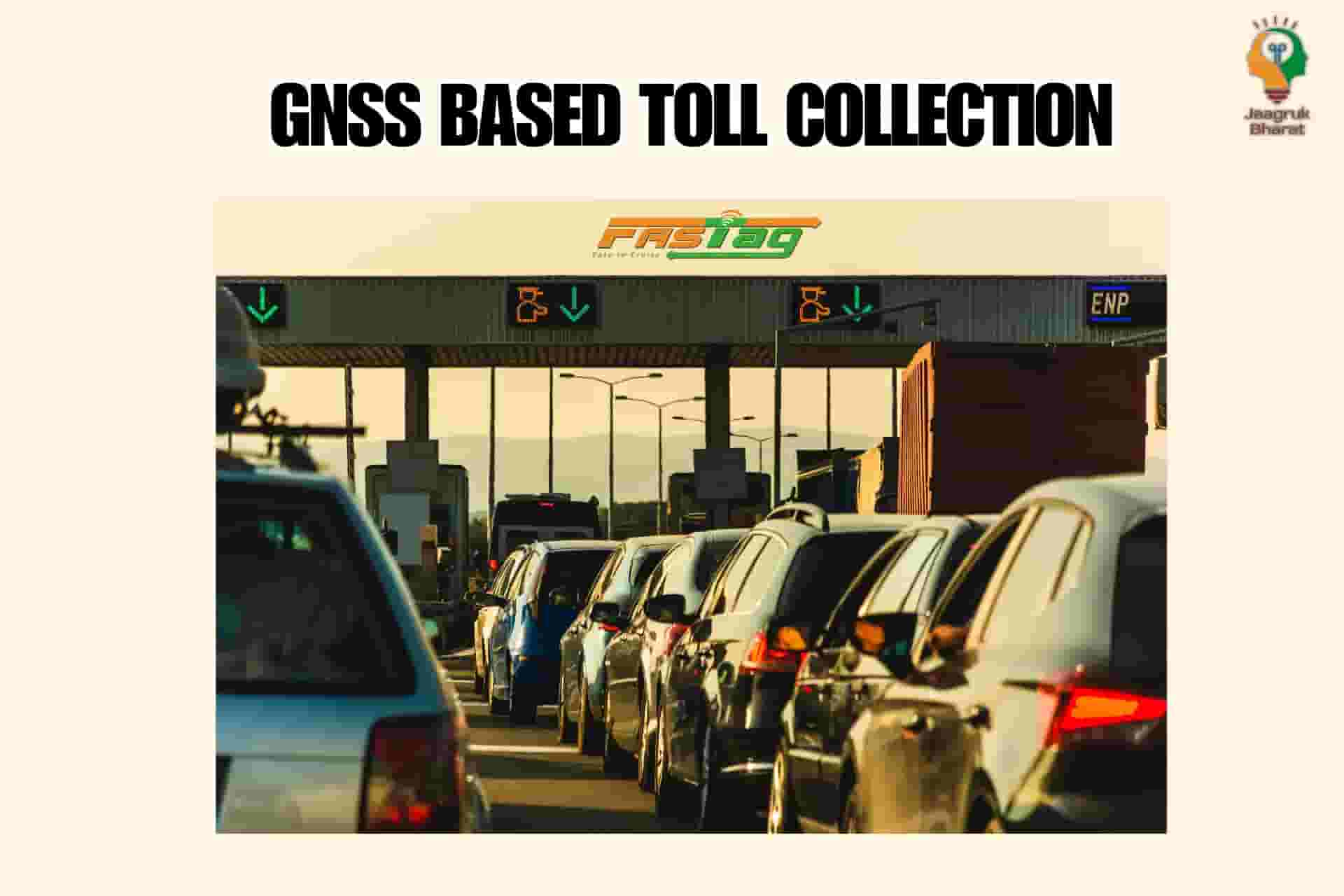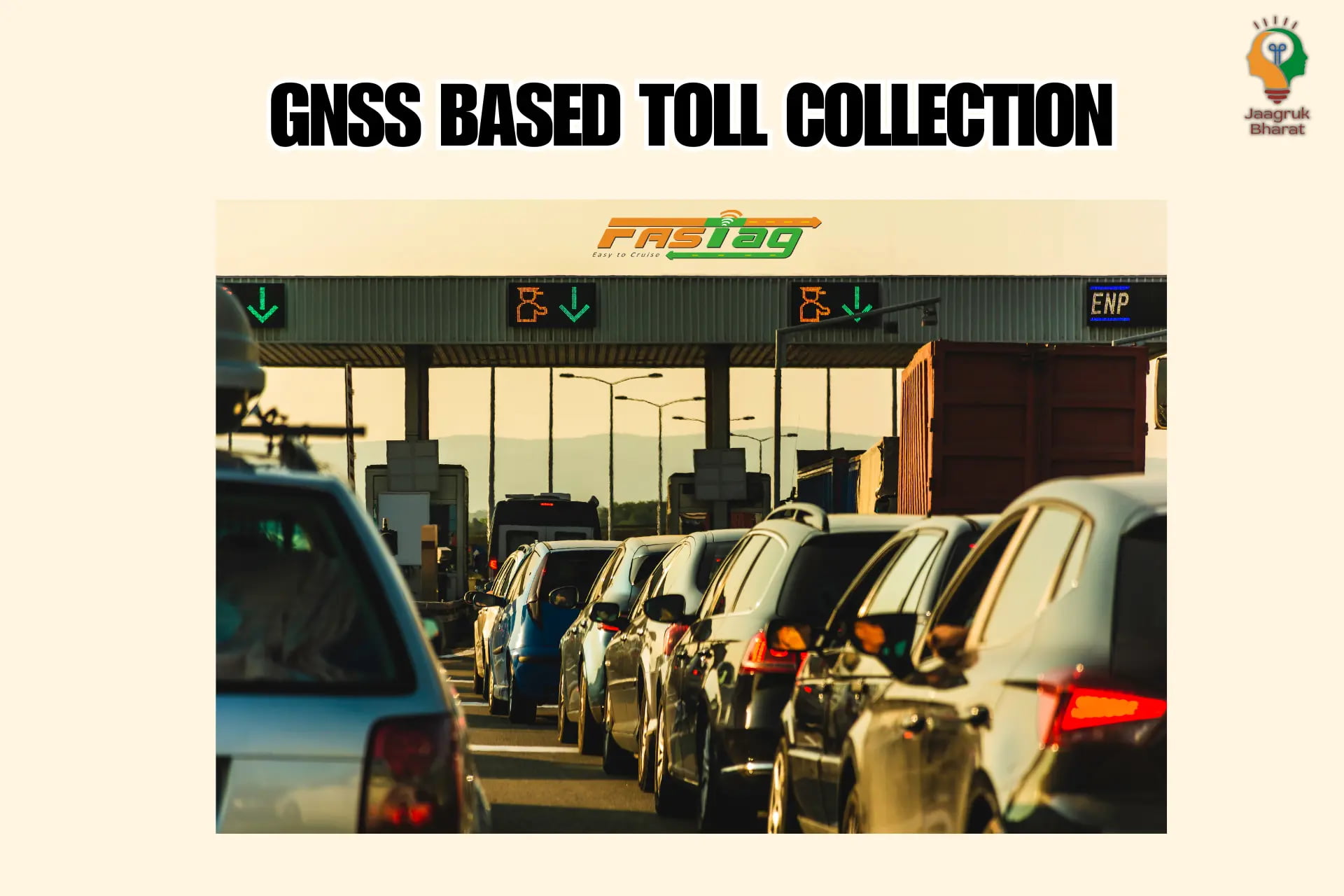What Is The GNSS Based Toll Collection?
Updated: 17-10-2025 at 5:30 AM
1k


India is aiming to embrace a satellite navigation-driven toll collection method shortly. This progressive technology seeks to make transportation and travelling across India an easier and hassle-free activity. Recently, the Indian Highways Management Company Limited (IHMCL), a company promoted by the National Highways Authority of India (NHAI), has invited global expressions of interest for the development and implementation of GNSS-based toll collection technology.
In this article, you will get the detailed information about the GNSS Based Electronic Toll Collection, Its benefits, implementation and much more.
Overview
Below is a quick snapshot of the GNSS toll initiative in India:
| Particular | Details |
|---|---|
| System Name | GNSS-Based Electronic Toll Collection (ETC) |
| Promoting Agency | Indian Highways Management Company Ltd (IHMCL) under NHAI |
| Objective | Barrier-free tolling, distance-based charging, and reduced infrastructure costs |
| Initial Segment | Commercial & large vehicles |
| Integration Plan | Hybrid with the FASTag (RFID) system at the start |
| Target Coverage | 4,000–5,000 km initially, then 10,000 km within 9 months |
| Expected Revenue | ~₹10,000 crore per year (projections) |
| Current Status | EOI invited, technical workshops held |
| Global Examples | Germany, Russia, Slovakia |
Latest News On Toll
- The Ministry of Road Transport & Highways has actively solicited global firms to help shape India’s GNSS-based toll collection app and framework.
- On June 25, 2024, IHMCL organised an international workshop in New Delhi, bringing together experts to discuss the proposed GNSS OBU for car India and its technical models.
- The EOI also mandates that the GNSS-based toll collection app development and implementation align with the current FASTag ecosystem to ensure a smooth transition. With this, India prepares for the next phase of smart, GPS-based toll collection starting, ensuring efficiency and transparency in road tax management.
Also Read: Can You Cross Toll Booth For Free? Yes!
What Is a GNSS-Based Electronic Toll Collection (ETC) System?
A GNSS based toll collection system is a modern way of collecting tolls using satellite technology. It involves installing sensors or tracking devices inside vehicles that monitor movement and calculate toll charges based on the distance travelled. The employment of this system simplifies the tolling process and also averts the need to install and maintain roadside infrastructure, otherwise needed for toll collection.
It is a barrier-free mode of collection that ensures a seamless flow of traffic and minimum blockages on the roads. It tracks vehicle movement and calculates the deductible tax based on the distance covered or travelled. Advanced readers are equipped to read such sensors and deduct tax.
This method of tolling is currently in use in Germany, Russia and Slovakia, respectively. India is aiming to implement this method in furtherance of its vision of creating a developed India by 2047. The method will initially be implemented for commercial vehicles only.
Benefits of GNSS-Based Electronic Toll Collection (ETC) System
The government of India expects several long-term benefits from the Gnss based toll collection in India scheme:
-
Smooth Movement: The national highways will ensure a well-facilitated and hassle-free riding experience. The flow of traffic would be smooth.
-
Increase in Revenue: The government has predicted the generation of Rs 10,000 Crores in revenue from the implementation of the GNSS system. Leakages and thefts from the tolling systems would be entirely averted with its implementation.
-
Distance-based Tolling: The GNSS toll system price will depend on the distance travelled, making it fairer for taxpayers.
Also Read: The Future Of Toll Payments: Insights On The New FASTag Rules
Implementation Of GNSS-Based Electronic Toll Collection (ETC) System In India
The rollout of the GNSS-based toll collection system in India will occur in phases. Here’s how it will unfold:
-
It will initially be implemented for commercial and heavy vehicles, especially trucks and freight carriers.
-
The system will start by covering 4,000–5,000 km, expanding to 10,000 km within nine months and up to 50,000 km eventually.
-
It will work in integration with the current FASTag (RFID) system, where both will operate simultaneously for a hybrid transition model.
-
Dedicated GNSS lanes will be developed at toll points to reduce congestion and speed up travel.
-
The use of GNSS OBU for car India will become mandatory for new vehicles once the full implementation is in place.
With this, India is all set to modernise its highway infrastructure and lead toward a gps based toll collection start model, promoting efficiency and cost savings.
Also Read: NHAI To Track 100 Toll Plazas With GIS-based Software For Seamless Traffic Management
Need For GNSS-Based Electronic Toll Collection (ETC) System
India’s current toll mechanism, based on static toll booths and RFID cards, faces challenges: congestion, maintenance costs, and incremental infrastructure needs. A Gnss based toll collection app can resolve these issues by:
-
Minimising delays at toll plazas
-
Reducing physical infrastructure dependence
-
Enabling dynamic, fair distance-based pricing
-
Making cross-state tolling seamless and interoperable
This step aligns with India’s broader digital infrastructure goals and the Make in India initiative for high-tech transportation systems.
Conclusion
The implementation of GNSS-based toll collection marks a significant step in India’s journey towards a smarter and more equitable transport system. With better transparency, higher revenue, and smoother travel experiences, the GNSS-based toll collection in India will not only enhance road efficiency but also support sustainable economic growth.
Get the latest updates on government schemes and policies with Jaagruk Bharat. Join India's biggest Jaagruk Bharat community. Share your thoughts, questions, and favourite topics with us.
Jaagruk Bharat Service On Colour Coded Fuel Sticker
The Jaagruk Bharat Service on Colour-Coded Fuel Sticker helps vehicle owners easily identify the fuel type—petrol, diesel, CNG, or electric—through an online application process. It ensures safety, compliance, and awareness for all vehicle owners across India. By using Jaagruk Bharat, you get authentic information, quick updates, and trusted online services to stay ahead in every government scheme or policy change.
Frequently Asked Questions
0
0
1k
0
0
1k Views
0
No comments available





Our Company
Home
About
T&C
Privacy Policy
Eula
Disclaimer Policy
Code of Ethics
Contact Us
Cancellation & Refund Policy
Categories
Women
Insurance
Finance
Tax
Travel
Transport & Infrastructure
Food
Entertainment
Communication
Government ID Cards
E-commerce
Traffic guidelines
Miscellaneous
Housing and Sanitation
Sports
Startup
Environment and Safety
Education
Agriculture
Social cause
Employment
Disclaimer: Jaagruk Bharat is a private organization offering support for documentation and government scheme access. We are not affiliated with any government body. Official services are available on respective government portals. Our goal is to make processes easier and more accessible for citizens.
All Copyrights are reserved by Jaagruk Bharat